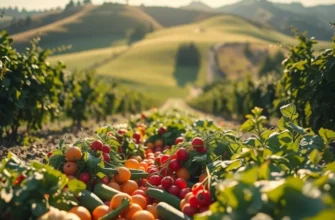Baking with yeast can initially seem daunting, but with the right techniques and a little patience, anyone can create delicious bread, rolls, and pastries. Yeast is a living organism that plays a crucial role in transforming simple ingredients into airy, flavorful baked goods. This guide provides practical tips and clear instructions for home cooks of all skill levels, empowering you to embark on a successful baking journey. Let’s demystify yeast and make the magic happen in your kitchen!
Understanding Yeast: The Heart of Baking

In the realm of yeast baking, understanding the role of yeast is pivotal. Yeast is a living microorganism central to the leavening process in baking. It ferments sugars present in the flour, producing carbon dioxide gas that helps dough rise, and adds flavor and texture. Let’s delve into the types of yeast and how each contributes to the baking magic.
Active Dry Yeast is perhaps the most familiar to home bakers. It’s granulated, designed to have a longer shelf life, and found in most supermarkets. To activate this yeast, you must dissolve it in warm water, typically between 100°F and 110°F, to “wake up” the dormant organisms. Using a thermometer ensures precision, as water that is too hot will kill the yeast, while water that is too cold will not activate it efficiently.
On the contrary, Instant Yeast, often known as “fast-rising” or “bread machine yeast,” does not require proofing in water. Its finer texture allows it to be mixed directly with dry ingredients. Instant yeast is appealing for those looking to expedite the baking process. Despite its convenience, monitoring the freshness is crucial. An unopened package can last up to two years, but once opened, it should be used within four months when refrigerated and kept in an airtight container.
Fresh Yeast, also called “cake” or “compressed” yeast, is less common but loved for its strong, immediate activity and distinct fermenting capability. It’s sold in refrigerated blocks and crumbles easily, making it straightforward to incorporate into your dough. Fresh yeast requires a mild proofing in lukewarm water or milk and offers a robust flavor to baked goods. However, it is perishable and should be used within a week of purchase; covered, and refrigerated tightly.
Yeast freshness directly affects the dough’s rise and flavor. For all types, even when stored correctly, yeast can lose potency. A simple test to determine freshness is to dissolve the yeast in warm water with a pinch of sugar. If after ten minutes, the mixture is frothy and bubbly, the yeast is active.
Proper storage prolongs yeast’s lifespan. Active dry and instant yeasts, when unopened, thrive at room temperature. Once opened, airtight containers in the fridge or freezer are best. Fresh yeast should remain refrigerated and be used swiftly to maximize its leavening strength.
Understanding yeast goes beyond the simple rise of dough. Mastering these yeast fundamentals equips you to troubleshoot dough issues and explore varied recipes confidently. Recognizing how to store and determine yeast’s vitality ensures superior results in your baking ventures.
For more tips on storing ingredients to maximize their use, consider checking out these eco-smart kitchen storage ideas.
Perfecting Your Baking: Step-by-Step Techniques

Mastering the art of yeast baking starts with understanding the significance of each step in the process. Measuring ingredients accurately is crucial; using a digital scale will ensure precision, particularly for ingredients like flour, which can vary greatly when measured by volume. Mixing the dough is next. Combine the ingredients thoroughly until you achieve a uniform mixture, making sure no streaks of flour remain. This is the first step towards developing gluten, which provides structure to the bread.
Once mixed, it’s time to knead the dough. Kneading activates the gluten network, turning a sticky mixture into a smooth elastic dough. Use the heel of your hands to stretch the dough away from you, then fold it back. Repeat this process until the dough passes the “windowpane test”—it should stretch into a thin, translucent membrane without tearing. If you’re unsure of your kneading skills, consider trying out some techniques in this practical ingredient batching guide.
Proofing follows kneading. During this stage, the dough ferments, allowing the yeast to consume sugars and produce carbon dioxide, which helps the bread rise. Place the dough in a lightly oiled bowl, cover it, and let it rise in a warm, draft-free spot. It’s crucial to not rush this process—ensure the dough doubles in size, which usually takes about one to two hours, depending on the temperature and the yeast activity.
Now, let’s address some common issues:
- If the dough is not rising as expected, check the yeast’s expiration date. Expired yeast loses potency and won’t produce the necessary gases for the bread to rise.
- A sticky dough might mean too little flour or insufficient kneading. Dust lightly with flour and knead a bit longer.
- If the bread is dense, it could be a sign of under-kneading or over-proofing.
Recognizing when the dough is ready is key. Besides doubling in size, lightly pressing the dough with a finger should leave an indentation. An immediate spring back means it needs more proofing; if the indentation stays, it’s ready for the next stage.
Baking is an interplay of science and art. Each step, from measuring to proofing, demands patience and attention to detail. By applying these techniques, you’ll not only improve your skills but also your understanding of how to transform simple ingredients into delicious bread. Keep practicing, and enjoy the rewards of your carefully crafted creations.
Final words
Baking with yeast is a rewarding experience that not only nourishes but also connects us to the rich tradition of bread making. Understanding yeast and mastering the techniques outlined in this guide will enhance your confidence in the kitchen. With each loaf, you not only hone your skills but also share the warmth of freshly baked bread with family and friends. Remember, practice makes perfect, and every knead of the dough is a step closer to getting it right. Embrace the process, enjoy the journey, and soon you’ll be creating delightful baked goods that elevate your everyday meals.







